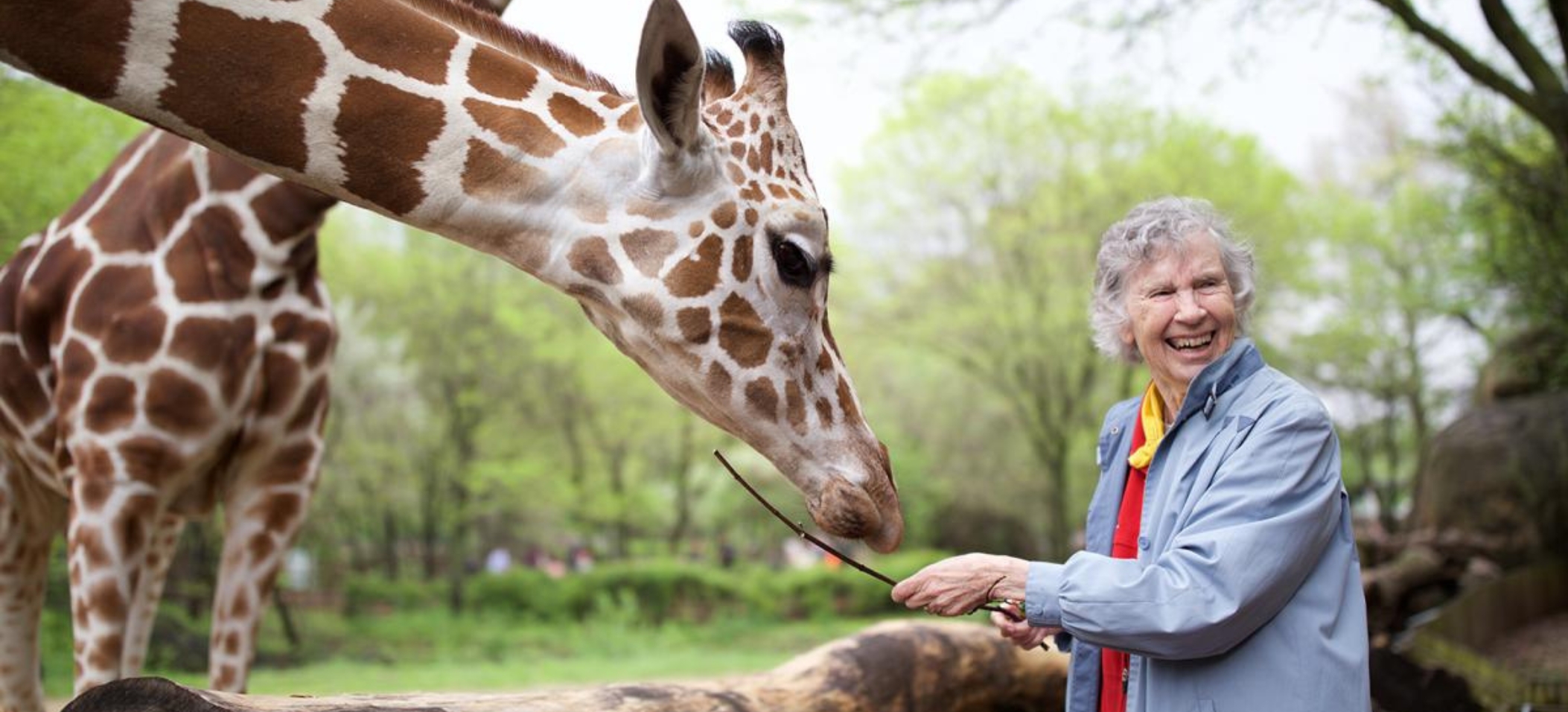
By CAGIS
Dr. Anne Innis Dagg is the world’s very first giraffologist (that’s someone who specializes in the study of — you guessed it — giraffes).
And here’s some exciting news: Dr. Dagg will be holding a workshop on November 14, as a follow-up to her first workshop on November 7.
I became interested in animals because my father had grown up on a farm and told me about frogs and muskrats and such. My brother Donald also told me stories about animals.
What was it about giraffes that you found especially interesting?
I found giraffes interesting because they were so tall and I was so small. They also were so regal, walking across their floor in the Chicago Zoo where my mother, who had grown up in Chicago, had brought me.
When you look back on your career, what are you most proud of?
I’m most proud of the books I wrote. [These include, among many others, the foundational texts on giraffes, called The Giraffe: Its Biology, Behavior and Ecology.]
Do you have a stand-out moment or story from your research that you could share with me?
The worst day of my life was the night I was nearing the house where I was to stay in Africa. The car broke down and I was terrified, because I knew there were lethal snakes and lions about. But I was so scared that I got out of the car and walked along in the dark just to be doing something. And luckily I was picked up by another car after some time. Then I was safe.
You’ve written a lot about gender bias in science — what has your experience been like as a woman in science? Have you seen things change over the course of your career?
Things got worse as I worked at universities. Men above me did not want a woman working with them. It was a very sexist environment. And sometimes I had more credits for my work than they did so they did not like that.
What advice would you have for a girl who’s interested in science now?
I think young girls should decide for themselves what they want to do, and then do as much as they can. Often one can find an adult eager to help and that is wonderful. Go for it!
Never give up. If what you have learned is new, talk to others about this but don’t let them take over for you. You do the work yourself and then you get the prize!





